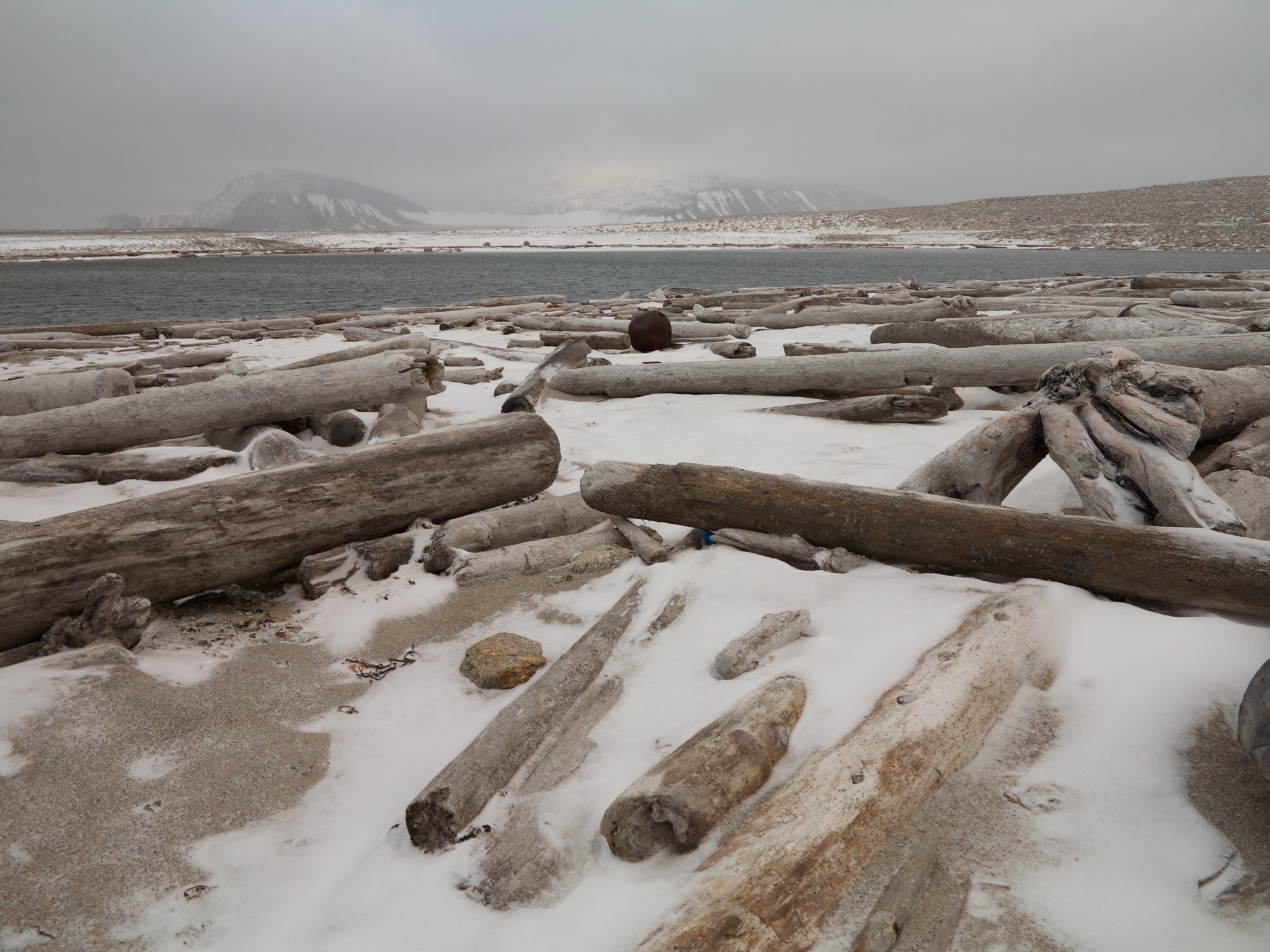With season’s end
you topple to the ground,
aching, broken limbs
held aloft by briny hands
that bare you proudly
to their sunken home.
Drifting.
With hushed reverence
you plunge into the laminate,
embraced in place
by cold and surging tides.
Drifting.
You sail through crystal waters
and mother-of-pearl skies,
skimming ragged currents
across this frozen,
breaking kingdom.
Drifting.
Washed up on frigid shores,
your weathered body
shimmers in the midnight sun.
Every crease a story,
waiting to be told.

This poem is inspired by recent research, which has used ancient driftwood to track 500 years of Arctic warming and changes to sea ice levels.
The Arctic Ocean collects trees that naturally fall into high-latitude rivers in North America and Eurasia. In extremely cold temperatures, some of these trees become frozen into the sea ice, which then floats across the ocean, swept along by ocean currents and winds, until beaching on the shores of Svalbard, a Norwegian archipelago in the Arctic Ocean. Some of this ancient driftwood has sat on these beaches for hundreds of years and is now being used as a proxy for sea ice levels and thus warming in the Arctic over this time period.
In this new study, researchers combed several beaches in northern Svalbard for driftwood. Back in the lab, they analysed each set of tree rings to determine what kind of tree it was and then compared these ring patterns to a database of measured rings, enabling each tree to be traced to individual countries and even specific rivers, thus showing how these driftwood sources have varied over time. This driftwood data was then paired with sea ice observations dating back over 500 years and was found to match the observational record of Arctic Ocean surface circulation patterns and climate conditions, thereby supporting the use of driftwood as a proxy for Arctic sea ice dynamics. In particular, a distinct decrease in driftwood movement during the last 30 years matches the observed decline in Arctic sea ice extent that has also been observed in recent decades. With abundant driftwood deposits across the Arctic, this methodology should allow for a finer scale study of how (and why) sea ice has changed across this region since the Industrial Revolution and beyond.
Discover more from The Poetry of Science
Subscribe to get the latest posts sent to your email.